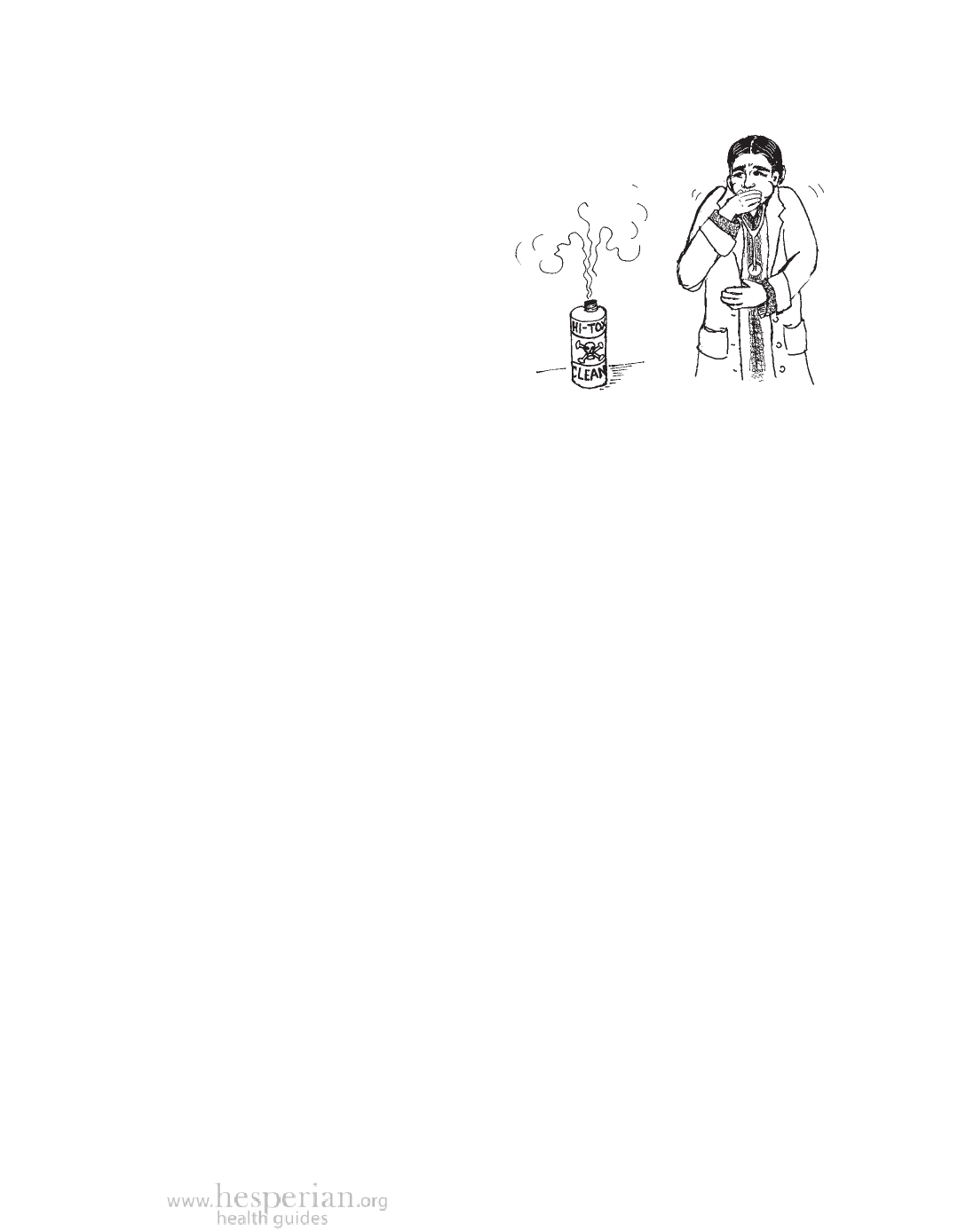
Disinfecting with Chemicals 429
Disinfecting with Chemicals
All chemicals used to disinfect can
be harmful and need to be used
with great care. Some chemicals
commonly used to disinfect include
hydrogen peroxide (6%), chlorine
bleach, ethanol (70%), and isopropyl
alcohol (70% to 90%).
Many common cleaning and
disinfecting products contain
glutaraldehyde or formaldehyde.
Regular exposure to glutaraldehyde
Chemical fumes can be harmful!
and formaldehyde can cause cancer
and death. These chemicals should not be used. (See pages 430 to 432 for safer
ways to disinfect with chemicals, and page 440 for safe disposal of chemicals.)
Many health centers use these guidelines for safety when using chemicals:
• Use chemical disinfectants outside, or in well-ventilated rooms where
there is a good exhaust fan.
• Use only the amount of chemical disinfectant needed to do the job.
• Wear gloves, safety glasses, a mask, and protective clothing to protect
your skin, eyes, and breathing when using or disposing of chemicals
(see Appendix A).
• Store disinfecting chemicals in their proper containers. Label the
containers. Do not reuse those containers for anything else.
• Do not store or mix chemicals in water buckets, or containers or bottles
that may be used for food or drinks.
• Keep chemical containers tightly closed and stored upright. Check them
for breaks, leaks, and weak spots.
Wastes that do not need chemical disinfection
It is often thought that body parts need to be disinfected with chemicals.
But body parts, including the placenta (afterbirth) and umbilical cord, are
most easily disposed of by putting them in a latrine or burying them deep
in the ground. In many communities, burying the afterbirth is an important
ritual. If it is done safely, burial is also a good way to protect the community
from germs that may grow in the afterbirth or other body parts. (See pages
436 to 440 for safe methods for disposing of waste.)
A Community Guide to Environmental Health 2012